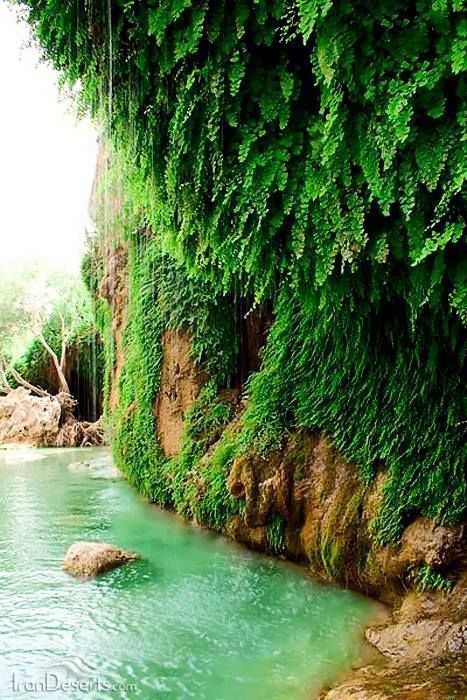Country Iran Capital Esfahan Time zone IRST (UTC+03:30) Population 5.121 million (2016) | Region Region 2 Counties 22 Area 107,029 km² | |
 | ||
Main language(s) Predominantly Persian.
Minority: Bakhtiari Luri, Qashqai, Georgian, Armenian languages in some regions of the province Destinations Isfahan, Kashan, Abyaneh, Natanz, Nain, Semirom Clubs and Teams Zob Ahan Esfahan F.C., Foolad Mahan Isfahan BC, Zob Ahan Esfahan Volleyball Club Colleges and Universities Isfahan University of Medica, Isfahan University of Techno, Islamic Azad University, Islamic Azad University, Golpayegan University of Engine Points of interest Naqsh‑e Jahan Square, Vank Cathedral, Jameh Mosque of Isfahan, Khaju Bridge, Sheikh Lotfollah Mosque | ||
Isfahan province (Persian: استان اصفهان Ostāne Esfahan ), also transliterated as Esfahan, Espahan, Isfahan, or Isphahan, is one of the thirty-one provinces of Iran. It is located in the center of the country in Iran's Region 2. Its secretariat is located in the city of Isfahan.
Contents
- Map of Isfahan Province Iran
- Geography
- History and culture
- Public Universities
- Islamic Azad Universities
- References
Map of Isfahan Province, Iran
Geography
The Isfahan province covers an area of approximately 107,027 square km and is situated in the center of Iran. To its north, stand the Markazi (Central) Province and the provinces of Qom and Semnan. To its south, it is bordered by the provinces of Fars, and Kohgiluyeh and Boyer-Ahmad Province. Aminabad is the most southern city of Isfahan province just 2 km north of the border. To the east, it is bordered by the province of Yazd. To the west, it is bordered by the province of Lurestan and to the southwest by the province of Chahar Mahal and Bakhtiyari.
The city of Isfahan is the provincial capital; and the counties of this province are as follows: Aran o Bidgol, Ardestan, Esfahan, Lanjan, Shahinshahr and Meymeh, Khomeini Shahr, Khansar, (The Upper) Semirom, Fereydan, Fereydunshahr, Falavarjan, Kashan, Golpayegan, Mobarakeh, Nain, Najaf Abad, Lower Semirom (Dehaghan), Shahreza, Anarak and Natanz; 18 townships, 38 counties, 67 cities, and 2,470 villages in all. According to the census in the year 2006, the population of the province was 4,559,256 of which approximately 83.3 percent were urban residents and 16.7 percent resided in the rural areas. The literacy rate was 88.65 percent. In 2011 population of Isfahan grew up to 4,879,312.
The province experiences a moderate and dry climate on the whole, ranging between 40.6 °C and 10.6 °C on a cold day in the winter season. The average annual temperature has been recorded as 16.7 °C and the annual rainfall on an average has been reported as 116.9 mm. The city of Sepahan (Esfahan) however experiences an excellent climate, with four distinct seasons.
With an elevation of 4,040 metres, the Shahankuh is the highest peak in Isfahan Province. This mountain is located about 20 kilometres southwest of the city of Fereydunshahr in the western part of Isfahan Province.
History and culture
Historians have recorded Espahan, Sepahan or Isfahan initially as a defense and military base. The security and protection of the gradually increasing castles and fortifications, thereby, would provide the protection of residents nearby, therefore leading to the growth of large settlements nearby. These historical castles were Atashgah, Sarooyieh, Tabarok, Kohan Dej, and Gard Dej to name a few. The oldest of these is Ghal'eh Sefeed and the grounds at Tamijan from prehistoric times. The historic village of Abyaneh, a nationwide attraction, also has Sassanid ruins and fire temples among other historical relics.
During the 17th and 18th centuries, Isfahan province enjoyed high standards of prosperity as it became the capital of Safavid Persia. While the city of Sepahan (Esfahan) was their seat of monarchy, Kashan was their place of vacation and leisure.
Isfahan province encompasses various sects today. The majority of the people in the province are Persian speakers, but Bakhtiari Lurs, Georgians, Armenians, Qashqais and Persian Jews also reside in the province. The official language of the province is Persian, though different ethnic groups and tribes abide by their own language such as Judeo-Persian, Armenian, Georgian, Qashqai Turkic or Bakhtiari Lurish. Isfahan province is noted for its reputed personalities such as writers, poets and other eminent figures who have been born and brought up or have lived in this territory.
Public Universities
Islamic Azad Universities
Several well-known Islamic Azad University campuses in Iran are located in the province:
